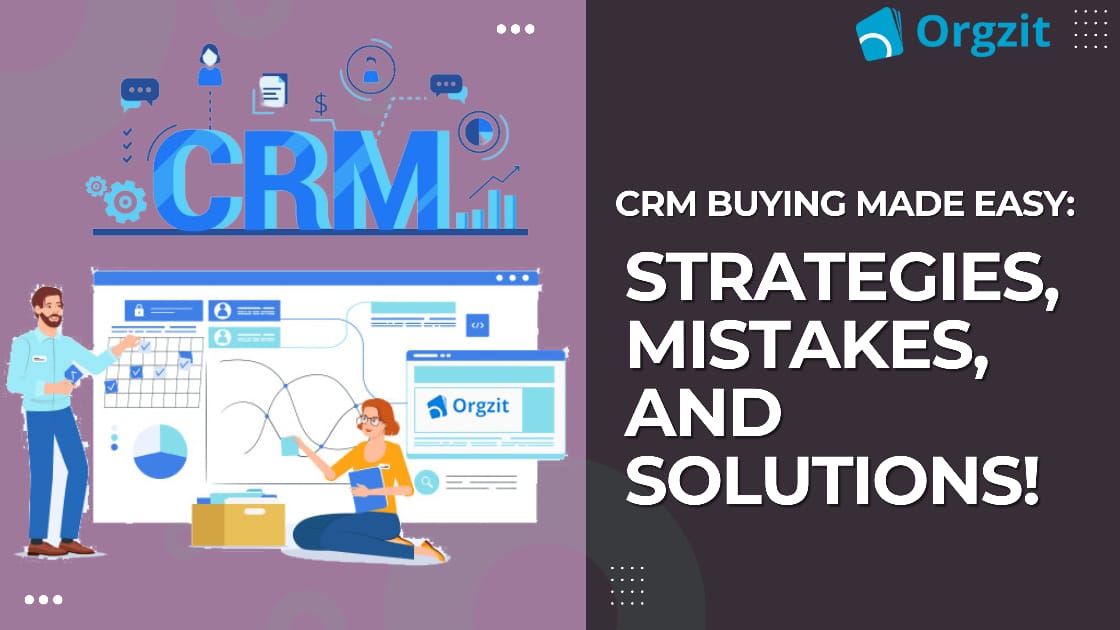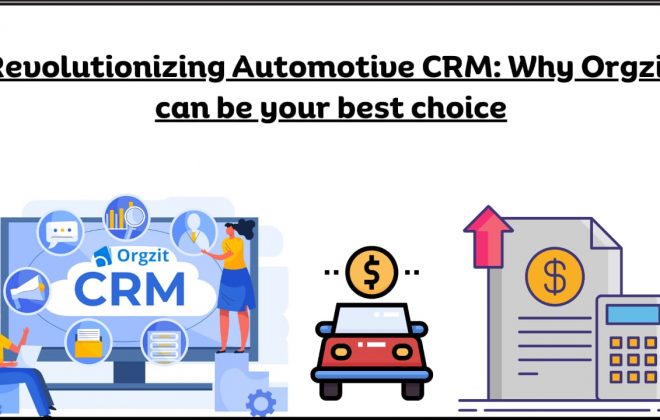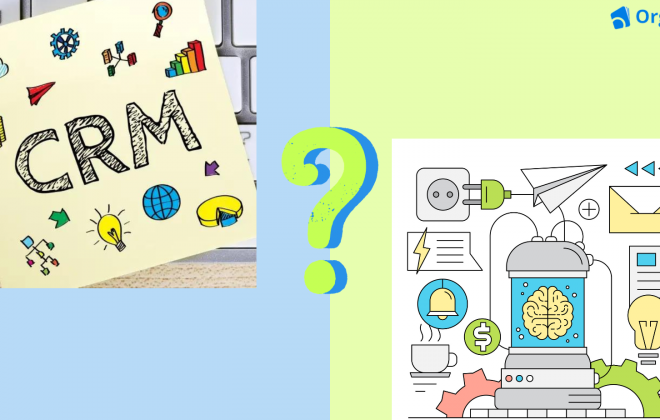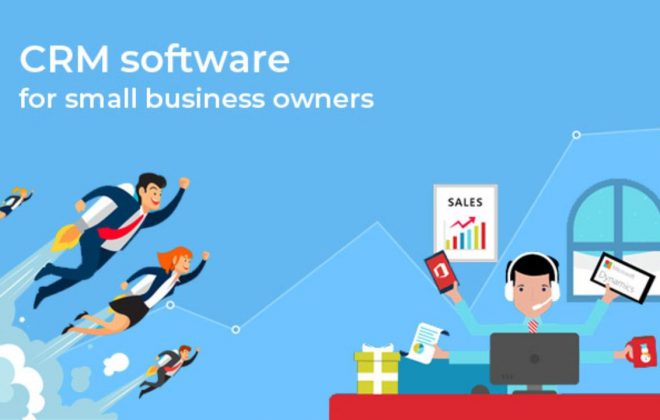How to overcome CRM buying dilemma quicker?
Been procrastinating buying a CRM for your company because of the hectic research and know-how required?
Or are you in a buyer’s dilemma, afraid of making mistakes or choosing the wrong one from the 100s of options available in the market?
Well, our dear friend, we understand it! Buying a CRM is a big investment in terms of time, money, and stakeholder involvement.
But worry not; here’s a crisp guide for you to understand all the “Do’s and Don’ts” of CRM buying.
Bonus: Read on to get your hands on a specially created checklist for you to make your buying journey easier than ever!
Why should you buy a CRM?
Well, if you have any second thoughts about whether you should even buy a CRM or not, here’s your answer!
The right CRM system can assist you in accomplishing a lot more than you think.
In fact, businesses that invest in CRM technology see an average return of $5.60 on investment. CRM solutions give businesses a competitive advantage in order to maximize profits.
CRM solutions are vital to almost every sales, marketing, and customer service team. Statistics state that:
- 82% of top sales reps stated that their CRM is “critical” to closing deals
- Of those who use CRM, 47% stated that it had a crucial impact on customer retention and satisfaction
- CRMs can increase lead conversion by 300%
In essence, CRM is more than just a nice to have. It is critical for maintaining a competitive advantage and ensuring loyal and satisfied customers.
But but, hold your thoughts there because simply implementing CRM technology will not guarantee that you will see immediate improvements in your sales and processes.
The implementation phase is critical for maximizing the value of your CRM. It is the most common place for businesses to fail, as about 70% of CRM implementation projects fail to achieve their goals due to common mistakes and pitfalls!
And this is where we will help you! In this article, we will further explore the common mistakes and hidden pitfalls to avoid that you might encounter while implementing a CRM.
Common Mistakes in CRM Selection
A. Rushing the decision-making process
1. The consequences of impulsive CRM choices:
In B2B or any other sector, a company that chooses a CRM without first conducting a thorough evaluation may face issues such as isolation of data, inefficient workflows, and user dissatisfaction.
A manufacturing firm, for example, that quickly implements a CRM system without considering its compatibility with production processes may face disruptions like workflow inefficiency, data isolation, order processing delays, employee frustration, and customer dissatisfaction.
2. Let’s understand this with an example:
Consider a marketing agency that is rushing to improve efficiency by implementing a CRM system without thoroughly evaluating its customization capabilities. Unfortunately, the CRM’s rigidity becomes a hindrance, resulting in the following issues:
- The rigid CRM structure hinders the agency’s ability to customize campaigns for clients with unique demographics, leading to content mismatch and data fragmentation.
- This results in inefficient workflows, missed cross-selling opportunities, and client dissatisfaction.
- The agency also loses its competitive edge, facing challenges from competitors with more flexible CRM solutions, affecting its market position.
B. Ignoring the specific needs of the business
1. The importance of aligning CRM features with business requirements:
When an organization neglects its specific needs, it might invest in a CRM loaded with irrelevant features. For instance, a financial services firm opting for a CRM designed for retail will later regret it after discovering how it lacks essential functionalities like managing complex financial workflows.
2. Example illustrating the repercussions of mismatched CRM solutions: reverse the example
Consider a tech company opting for a CRM designed for basic sales tracking rather than one with robust lead nurturing capabilities. This decision presents several challenges:
- The CRM’s basic structure is insufficient for complex sales cycles, leading to missed opportunities and extended deal closures.
- The company also faces competition from CRMs offering advanced lead nurturing, potentially losing market share.
The company’s oversight in CRM selection led to missed opportunities, extended sales cycles, and a diminished competitive position.
The Hidden Dangers
1. Overlooking integration challenges
In a B2B context, a company may overlook the importance of seamless integration between CRM and other enterprise systems. A poor integration causes operational disruptions impacting inventory management, delays and, ultimately, customer satisfaction.
2. Underestimating scalability
As a company’s client base and operations grow, the CRM, which lacks scalability, begins to struggle under the weight of increasing data and user demands. This can cause system slowdowns, putting critical processes like lead management and customer interactions at risk.
The consequences must be felt throughout the organization:
- sales teams will be less productive.
- customer support will be delayed.
- vital business insights are more difficult to obtain.
Finally, the CRM’s inability to scale effectively limits the company’s ability to adapt to growth.
3. Vendor Lock-In Risks:
1. Businesses should carefully evaluate long-term contracts with CRM vendors to avoid contractual constraints and potential dependency on proprietary solutions, which can limit flexibility and hinder the ability to switch to more suitable solutions. Opting for CRMs with proprietary technologies or closed ecosystems also poses challenges if the vendor faces issues or discontinues support for specific features.
4. Customization Difficulties and Limitations:
Choosing a CRM without thorough customization features can lead to limited configuration options, making it difficult for businesses to adapt to their unique processes and workflows.
Additionally, some CRMs may require extensive development efforts, resulting in high development costs, which can be a significant financial burden, especially for smaller enterprises with limited budgets.
Here is an example to help you understand these pitfalls better:
- TechHub, a booming B2B tech firm, excitedly adopts a new CRM. But when a customer places an order, their CRM clashes with e-commerce systems, causing multiple delays and internal chaos.
- As TechHub grew, they realized the consequences of overlooking scalability as their CRM struggled with data demands, slowing down operations. As a result, sales lose momentum, customer support lags, and insights become elusive.
- TechHub also made a mistake by signing a deal with a proprietary CRM. Initially perfect, but financial troubles lead to abandoned features, disrupting critical operations and trapping them in a contract.
- Now, TechHub realizes that it lack CRM customization. Their workflows hit a wall, leading to expensive development efforts, draining resources, and causing financial strain.
- In this tale of TechHub, poor integration, scalability issues, vendor lock-in, and customization pitfalls clearly illustrate the need to choose a CRM wisely for business success.
Beyond Features: Strategic Considerations
A. Emphasizing the importance of a strategic approach to CRM selection:
Make sure to prioritize solutions that can scale seamlessly, adapt to evolving business needs, offer flexibility for customization, accommodate changing workflows and industry trends, and also look for robust security features and compliance assurances.
Avoid short-term fixes and prioritize a CRM that supports your strategic vision.
B. Evaluating vendor reputation and customer support:
Research the vendor’s history and success stories to gauge reliability and meet client expectations. Customer
Check customer reviews for insights into system stability, update frequency, and vendor responsiveness.
Ensure the vendor offers scalable support services to handle business growth effectively.
Verify the vendor’s commitment to continuous improvement and proactive support.
Establish clear service level agreements (SLAs) for support, defining response times and resolution procedures for a reliable support structure.


PRO TIP: Best Practices for CRM Implementation
A CRM implementation strategy will go a long way towards ensuring that your CRM achieves more for your company. Here are some additional considerations to keep in mind to ensure the process’s success, both now and in the future:
- Form a CRM Implementation Team: Key strategic members will add value to the process and ensure that it runs as smoothly as possible. A typical implementation team consists of the following individuals:
- The project manager is the leader and focal point of the implementation.
- Application analyst: An IT professional in charge of data cleansing and migration.
- Another IT member who can provide system customization is an application developer.
- QA test engineer: leads testing efforts after the software has gone live.
Read here further on: who should be involved in the CRM buying process?
- Establish objectives and goals: Identifying the unique needs and goals of each organization is essential for selecting the right technology and implementing it effectively. By;
- mapping out current processes,
- examining customer personas,
- assessing company and sales goals,
you can identify potential benefits of CRM.
Tap to read further on: how will a CRM help me in my business-goals?
- Make a pre-purchase plan: CRM implementation details will vary depending on your company’s size, configuration needs, and user requirements. A typical plan entails the following steps:
- Data migration
- User education and engagement
- Testing
- Evaluation of the Launch
- Create a CRM implementation strategy to maximize ROI, increase adoption rates, and make the process smooth.
Read to learn more about ROI analysis of a CRM
- The Average Cost of CRM Implementation: CRM implementation costs vary by company size, integrations, training, and consulting needs. Major aspects that require funds include:
- CRM License Fee
- Support and Consultation Fee
- Staff overtime Fees
- Test your CRM and systems: Early on, consult with your IT department to set a time for going live. Your IT department should do the following:
- System testing
- Functional evaluation
- Performance evaluation
- Usability research
- Testing for integration
- Assess the Performance of Your CRM: After going live, evaluate the success of your CRM by assessing key metrics such as;
- system activity
- input quality
- record updates
- business metrics
- Gather user feedback and adjust as needed.
A checklist for business owners to assess their CRM needs and options
This caution checklist below is a proactive approach serving as a reference for business owners when evaluating and implementing Customer Relationship Management (CRM) solutions.
Caution checklist
✔ Business objectives not defined, clear, or agreed upon by key stakeholders
✔ Key success criteria that are not defined, not prioritized, or have too many
✔ Being over-ambitious
✔ Not having change management and adoption plans
✔ Underutilizing CRM Tools and capabilities (Ignoring the End User, Lack of team training, Over-complicated software, Lack of enforcement on usage)
✔ Lack of CRM integrations with Other Systems
✔ Not considering future needs / No scalability
✔ Signing long-term lock-in contracts
✔ Inadequate Research
✔ Vendor Evaluation based on reliability, support, and track record.
✔ Hidden costs
✔ Lax Security Measures render you unable to safeguard sensitive business data.
✔ Regular Updates for functionality and security.
Conclusion
In conclusion, the success of CRM implementation is dependent on strategic alignment, meticulous planning, and ongoing evaluation.
Businesses must prioritize clear objectives, customized solutions, and seamless integration in order to navigate the multifaceted landscape of CRM selection.
Curating a caution checklist will help identify and avoid potential pitfalls and hidden costs. The importance of vendor reputation, diverse implementation teams, and robust security measures ensures long-term success.
Finally, businesses should view CRM adoption as an ongoing process, with adaptability and regular updates being critical to realizing its full potential for enhanced functionality, security, and overall business success.


FAQs
A careful vendor evaluation based on dependability and support is required to avoid long-term lock-in contracts. For a dependable support structure, businesses should prioritize clear service level agreements (SLAs) for support, defining response times and resolution procedures.
Common errors include rushing decisions, ignoring specific business needs, and overlooking integration challenges. These errors can result in data isolation, inefficient workflows, and dissatisfied customers.
Researching vendor history and success stories can help determine dependability. Checking customer reviews reveals information about system stability, frequency of updates, and vendor responsiveness, ensuring a trustworthy support structure.
Key considerations before buying a CRM include forming a CRM implementation team, establishing clear objectives, evaluating CRM options, creating a budget, and ensuring scalability. It also includes considerations for data migration, user training, testing, and evaluation post-implementation.









